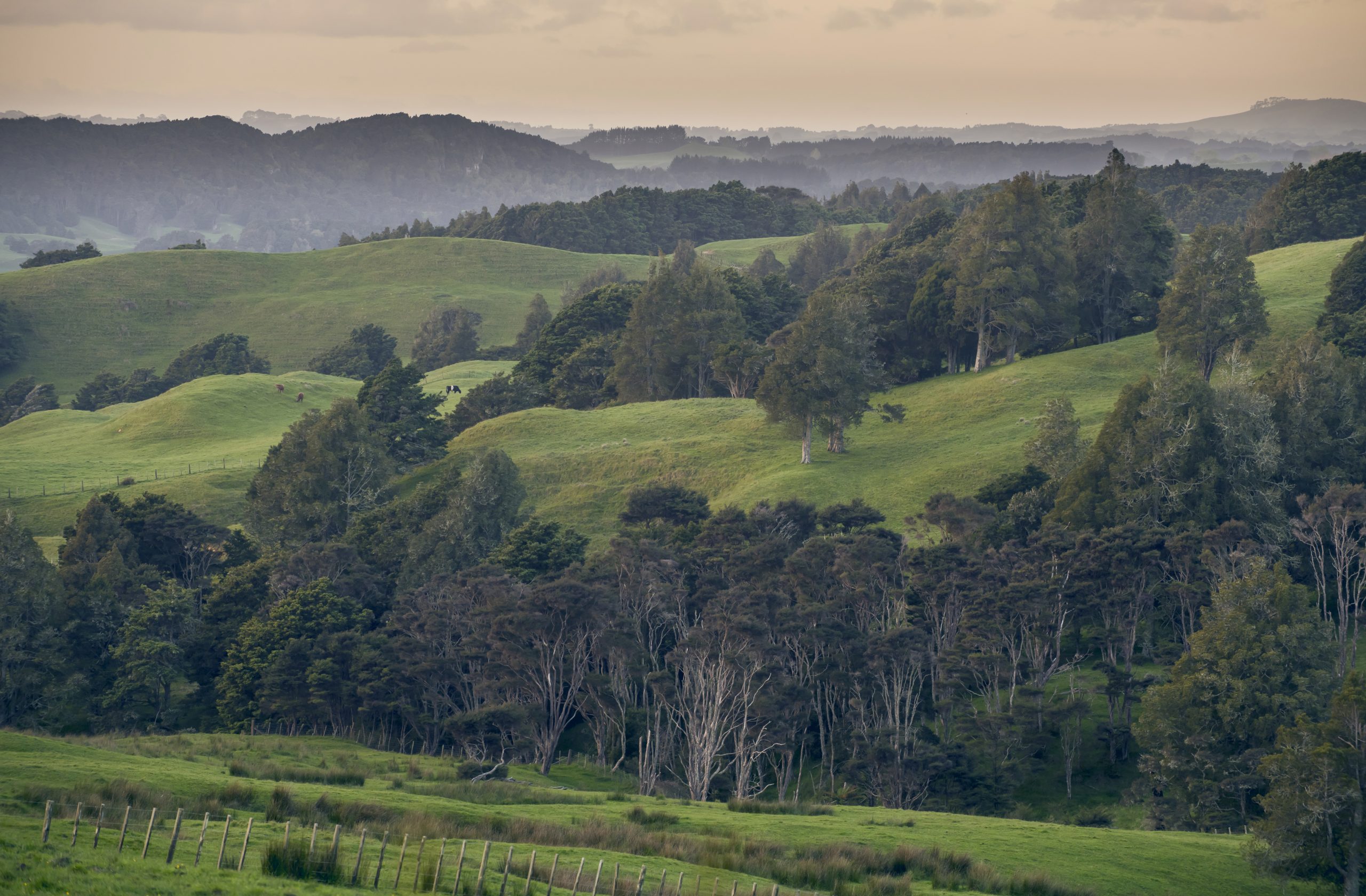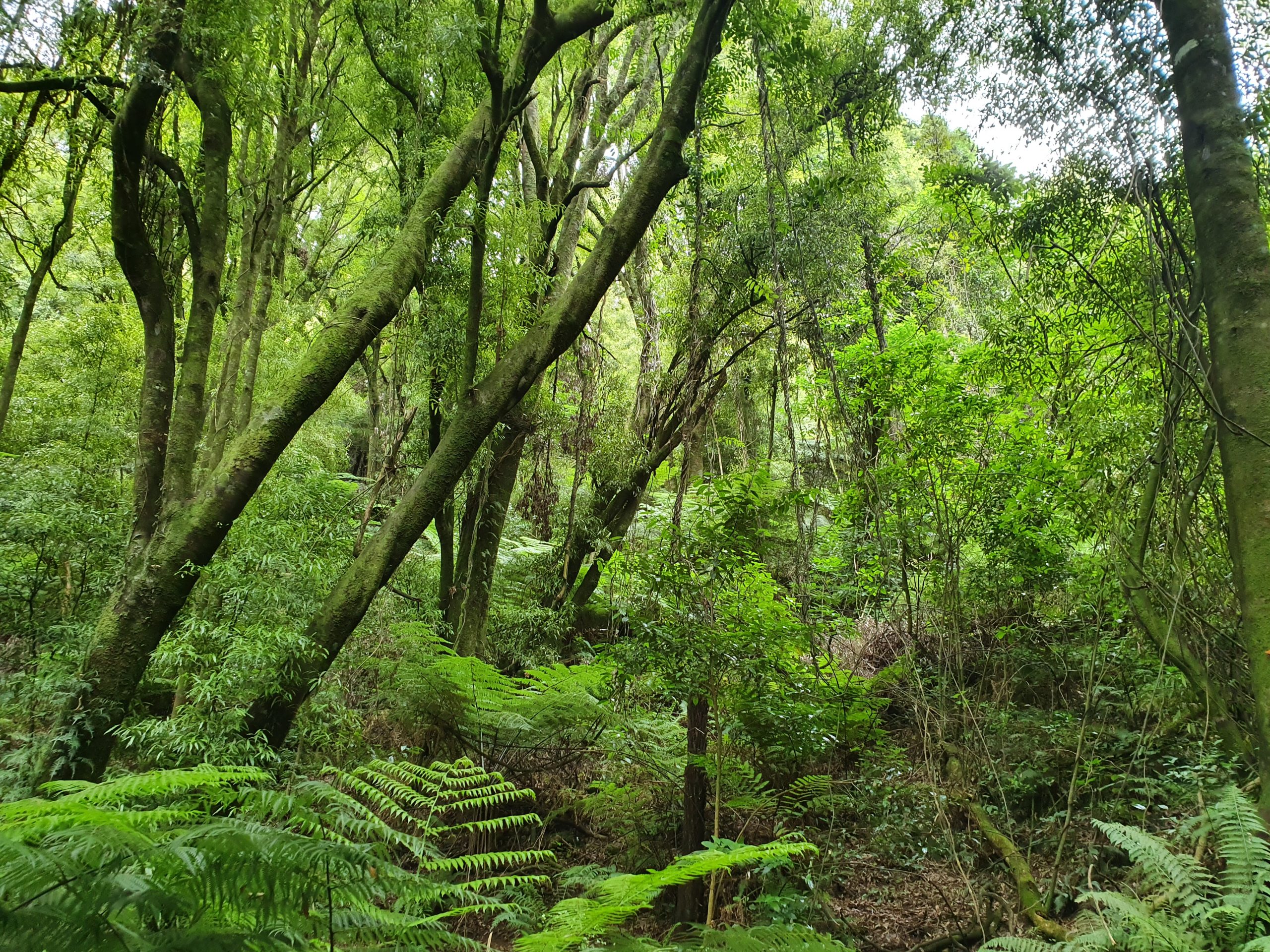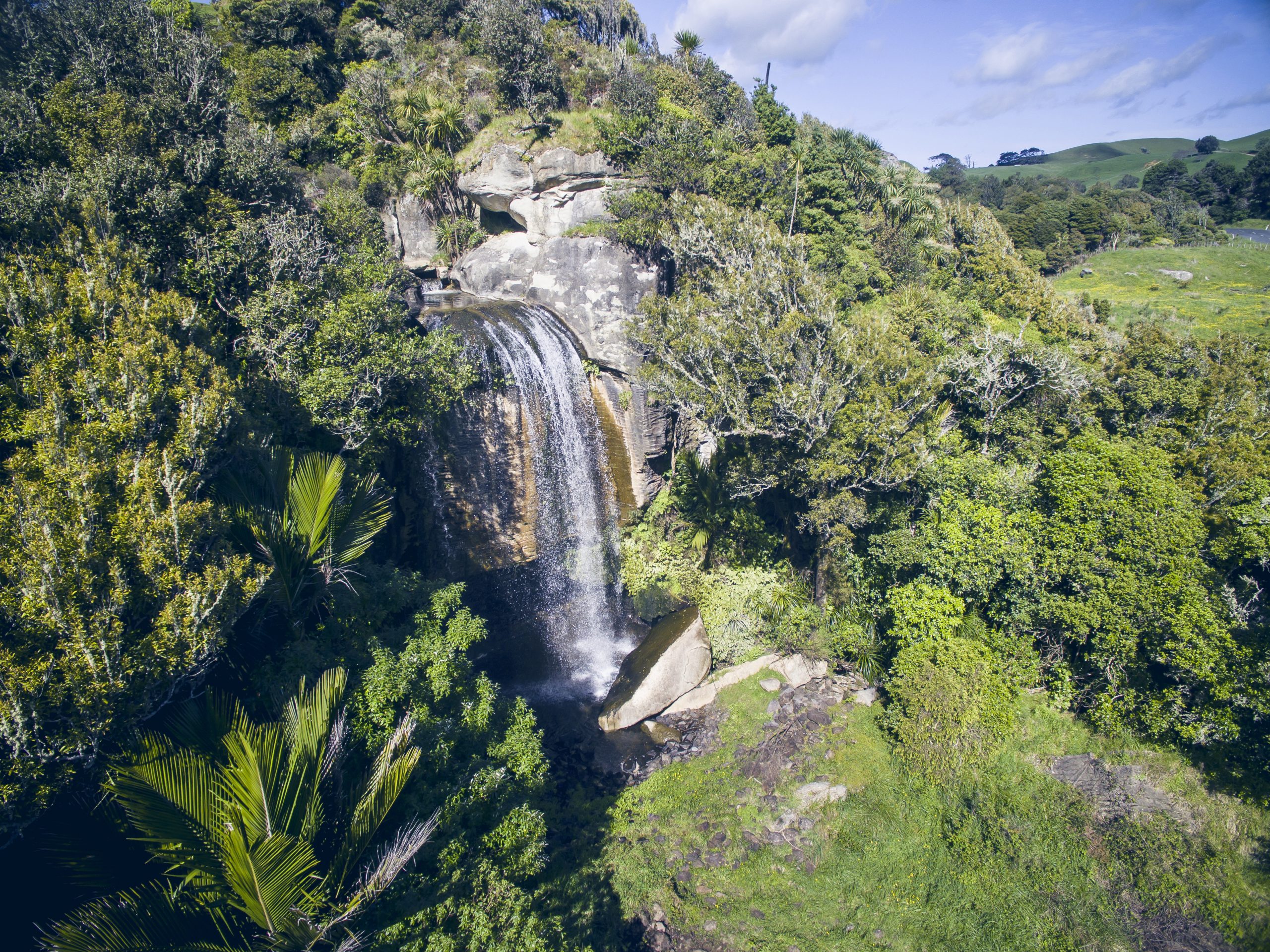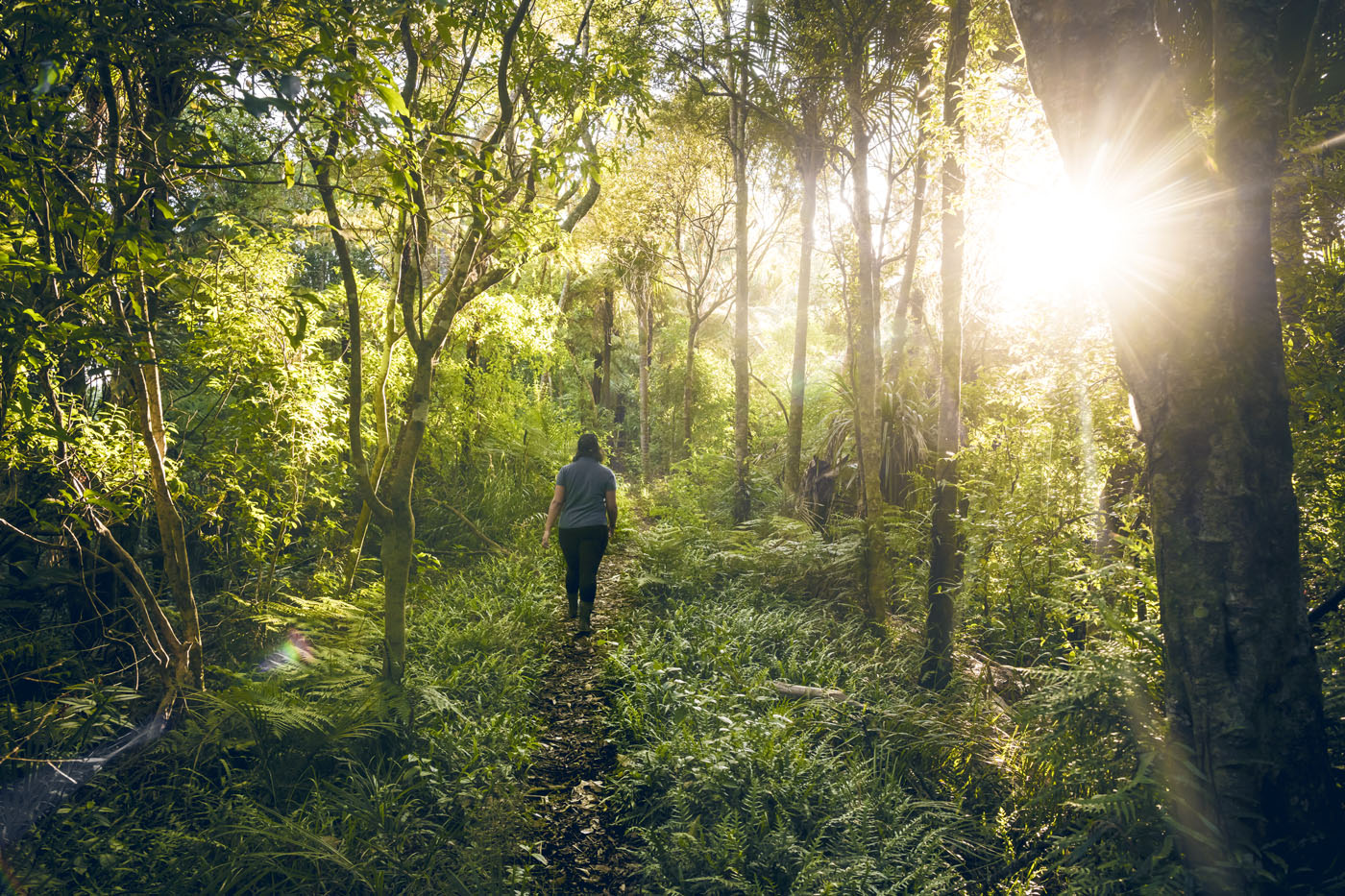The QEII National Trust is a long-standing, well-respected contributor to habitat conservation in Aotearoa New Zealand. The organisation is busier than ever helping landowners protect valuable habitats through covenanting. This article reflects on why there is a strong upsurge in people wanting to protect their land in perpetuity. Becoming more involved with a wider cross-section of communities is one of QEII’s objectives for the future.
Coming from an agricultural background, I knew quite a lot about the QEII National Trust (QEII) when I saw this job advertised just over a year ago and decided to put in an application. What I discovered subsequently was that precisely zero percent of my city-dwelling friends had any awareness of QEII or what it does. Some thought I was heading off to run the swimming pool in Christchurch, or that park up the coast from Wellington.
If you’re from an urban background, with only passing knowledge of the primary sector, you could be forgiven for presuming that rural folk are ecoterrorists and pillagers, hellbent on diminishing our country’s natural resources for profit. In that case, you might be surprised to hear that there are a large number of farmers (and other rural-dwellers) who are dedicated conservationists and have permanently set-aside significant areas of their land for the preservation of biodiversity – and sometimes other conservation values like archaeology or landscapes.
QEII’s job is to work with those people to support them in their conservation ambitions for their land. Our main tools are relationships, expertise and covenants – but it’s the covenants that are the most obvious and tangible part of what we do.

”In 40 years QEII has established 4,700 covenants with landowners covering 180,000 hectares
QEII covenants are bespoke legal agreements between QEII and a landowner that relate to a specified, surveyed piece of land. They create permanent constraints on what can and can’t be done on that land. The covenant attaches to the land title, so it binds not only the current landowner, but also all future landowners. The vast majority of our covenants are about biodiversity protection and set out that a piece of land can’t be developed, logged, burned, grazed, quarried, or anything else that would be harmful to the protected biodiversity. QEII has, in the past, contemplated covenants that allow sustainable harvest forestry, but that’s not something we do now given the demand for purely conservation covenants. Covenants usually require that a new fence be built (we will contribute to the costs of that) and also require that landowners maintain those fences and address pest and weed problems.
Most of our covenants protect primary or secondary native forest. Because much of New Zealand’s public conservation estate is in high and inaccessible country, those protected forests on private land are often very important because they are the last remnants of largely lost lowland ecosystems – especially so for things like swamp forests or dune forests.
Since QEII was established about 40 years ago, we have established over 4,700 covenants with landowners, covering about 180,000 hectares. To put that into context – that’s about the same area as the North Island’s three remaining National Parks (Egmont, Whanganui and Tongariro) combined but smaller than Te Urewera.
Why do people do it?
When landowners choose to covenant a piece of forest with QEII they are, in economic terms, creating an opportunity cost by reducing land-use options for themselves and future landowners, and creating a permanent encumbrance of costs for fencing and care of their forest.
”Farm business managers are increasingly deciding that looking after biodiversity is important for their corporate reputation and their brand.
So why would they do that?
Well, essentially, from the perspective of QEII covenantors, the benefits of conservation must outweigh those costs. From what I’ve seen in my short tenure, there are three mindsets about the benefits of conservation that motivate QEII covenantors:
- Cause-driven conservation
Covenantors generally care about the biodiversity they are protecting. They love their birds and their trees and want to ensure that they continue to be around. Sometimes they talk about hours of enjoyment in their forest as a young person and want their great-grandchildren to get the same chance of enjoyment.
- Pragmatic analysis
Many covenantors recognise that protecting a forest or wetland is actually a pragmatic move for their farm and their business. Fencing off steep gullies and swamps can actually improve productivity by reducing stock losses and improving pasture utilisation and stock handling. Farm business managers are increasingly deciding that looking after biodiversity is important for their corporate reputation and their brand.
I’ve heard several farmers tell similar stories along the lines of… “dad and grandad worked all their lives to keep that swamp drained or that face clear of scrub, but now I’ve decided that both the farm and I will be better off just letting it be what it wants to be.”
- Legacy building
Most, but not all, of our farmer covenantors are closer to the end of their farming careers than the start. As they think about retirement, setting aside their life’s work and perhaps leaving their life-long home, many will be thinking about what future generations or owners of the land might remember them for. Some people, particularly those who have a close attachment with land, see conserving a valued part of it in perpetuity as a fitting legacy they might be remembered by.
While most of our covenantors are Pākehā, the idea of leaving a positive and valued legacy is reminiscent of the concept of whakapapa and being a good ancestor.

Few of our covenantors are driven solely by just one of these mindsets. Most are motivated by some combination of the three.
No covenant could proceed without at least some sort of pragmatic analysis by the landowner – they must be able to physically access and afford to build fences and maintain them along with pests and weeds.
There is clearly an opportunity to encourage more conservation and more permanent native forests on private land by reducing the barrier of affordability. This would tip the balance in favour of conservation for many more landowners. Affordability could be improved by offering subsidies for fencing in addition to what QEII offers (some local authorities already do this to some extent) or by creating a system to reward the creation of public benefits that private land conservation can provide. Not least among those public benefits are that covenanted forests provide an important reservoir for native biodiversity – and for sequestered carbon.
We need to increase capacity
QEII is at capacity for new private land protection and we are working on ways we can increase funding and capacity to be able to meet current demand. Based on the year to date, we are on-track to approve more than 140 new covenants covering maybe 4,000 hectares in 2021 – more covenants than have been added in any of the past 10 years. That’s really exciting, but also challenging for QEII in that we risk being distracted from our care for and relationships with existing covenantors if we’re solely focussed on the new stuff.
We have three leading theories as to why QEII finds itself more in-demand now than at any time that many of our regional people can remember.
- Covid reminds us of our mortality
The global pandemic has made 2020 a year like no other. However, despite a couple of significant lockdowns and ongoing adherence to procedure, life in New Zealand has been pretty normal. Maybe, the theory goes, all these reminders of the tenuousness of our existence have brought forward some people’s thinking about legacy and what they will have left behind when they pass on from this world.
- Farmers’ rising awareness of environmental responsibility
You only need to read any one of the farming newspapers or blogs to realise that environmental issues dominate a large proportion of the agri-sector’s thinking now – a significant change from say 10 or 15 years ago. Many farms are developing farm environment plans. Have farmers got on-board with the community conservation bandwagon – led by things like the predator free movement? Well I know some have, but I’m not sure this fully explains the growth in interest we’ve seen lately.
- Getting-ahead of likely regulation
The slightly more cynical view is that farmers can see regulation on the horizon and are choosing to get in and do their biodiversity protection now – while it’s largely voluntary and subsidised – rather than wait until they are required to protect land, without any support. This is possible, but I would note that a truly cynical landowner who fears being regulated into protecting a probable significant natural area would get ahead of this problem with bulldozer or chainsaw. Unfortunately, there may be a little bit of this going on.
Whatever the explanation – and it could be multiple things – QEII is operating at capacity. And that’s great because it means there is a growing number of rural Kiwis who want to do the right thing for their piece of nature.

”preserving nature for the benefit and enjoyment of the present and future generations.
What next for QEII?
QEII aims to inspire and help private land conservationists bring their ambitions to reality – and fully meet the demand for help that is out there.
I’ve talked about adding more new protection – more new covenanted land – and that’s important. That’s one of QEII’s priorities, but there are a few others.
QEII plans to focus more energy on helping landowners to look after and enhance what they have protected. Conservation is not usually a ‘spray and walk away’ type of an exercise. Getting a forest moving forward towards its full biodiversity potential, or even just maintaining what already exists, will usually need some sort of ongoing management effort. That may include control of pests and weeds, sometimes some planting, and in the most sophisticated examples, maybe the reintroduction of native wildlife. Our regional people are great at working with landowners and they have a huge amount of ecological expertise to share. We would love for them to have more time to work with covenantors – showing them how to bring out the best in their forest.
As I noted above there are broad scale, often community-led conservation efforts sprouting in many parts of the country. QEII would like to get better at coordinating work to add support to the larger projects.
And finally QEII is focussed on creating greater levels of engagement between New Zealanders and the land that QEII has helped to protect. Our legislated purpose, after all, is preserving nature for the benefit and enjoyment of the present and future generations. This is not to say we are promoting open public access for all covenants. That’s not desirable or practical for most landowners – especially for the many covenants that are embedded in an active farming landscape, with all of the livestock and health and safety risks associated with those places. But engagement could be as simple as landowners themselves, their families and friends, neighbours, and maybe even local school children spending more time in a covenant learning about the bush and maybe doing a little bit to help out.
I’m blown-away, pretty much every day in this job, by the generosity and dedication of so many people to great work to look after native biodiversity all over New Zealand. But’s what even more overwhelming is the scale of the opportunity to do much more. We just need to be able to get in front of a few more of the right people out there and reduce their barriers to getting involved.




Leave a comment